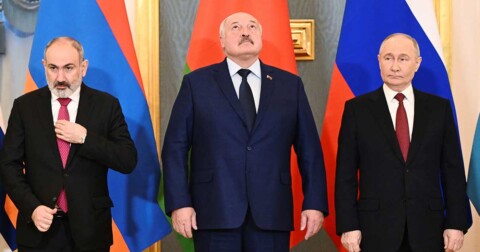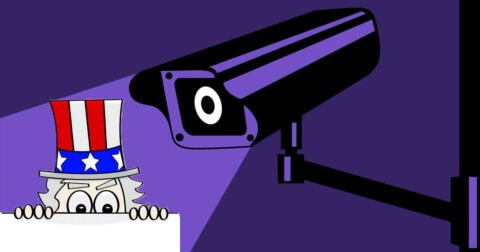Things become most apparent when we draw parallels between seemingly unrelated events. Take, for example, the recent victory in New York of candidate Zohran Mamdani, born in Uganda, whose main ideological orientation is left-liberal. U.S. President Donald Trump called him a communist, stating: “If you have communists in power in New York, all the money you send there is wasted.”
In this statement, the term “communists” is used as a pejorative for left-liberal policies, which, in Trump’s view, are highly damaging, implying that anti-communism remains a foundational element of American imperial power (albeit from another era). The media emphasize: “Mamdani (34) will be the first Muslim, the first South Asian, and the youngest person in the past century to be elected mayor of New York.”
NOVI SAD – NOVI PAZAR – NEW WORLD
The phenomenon of novum has become a victorious symbol. At the same time, New York — a city-symbol — was the target of the September 11, 2001 terrorist attacks, a series of four coordinated assaults by an Islamist terrorist group. Symbolically, this marks the closure of one era (2001–2025).
Another example comes from our own country. Media promotion, memes, and illustrations depicting the symbolic encounter between a young man in a šajkača (traditional Serbian cap) and a girl in a hijab aim to convey a message. Beyond legitimizing the hijab — which is understandable — the imagery also portrays a young man voluntarily waving the “Sandžak flag.”
Here, the novum phenomenon operates linguistically through the formula: Novi Sad – Novi Pazar – novi svet (New Sad – New Pazar – New World). By legitimizing the “Sandžak question” and linking it with Novi Sad — a potential center of Vojvodina separatism — the message directed toward the youth, especially in Belgrade, is that “everything is okay”: the hijab, the šajkača, the Serbian flag, but also the “Sandžak flag.”
Both examples show how certain narratives are imposed through symbols using technology — behind which lies a concealed form of techno-psycho engineering, fundamentally rooted in the fiction of transhumanism. The question is: what are the answers to this kind of manipulation?
MYTH AS AN INTRODUCTION TO REVANCHISM
The transhumanist narrative serves as an instrument of a segment of the global elite. The relationship between humanity and technology is tied to the definition of consciousness within a person. Human psychology carries a natural desire to master situations and space; thus, progress is also linked to the pursuit of self-realization. Yet technology conceals dangers to human nature itself—something recognized long ago. The development of human self-awareness, according to the eminent philosopher Ernst Cassirer, unfolds through the evolution of mythic thought expressed via symbols. Cassirer argues: “Unlike other animals, man does not live simply in a reality; he lives, so to speak, in a new dimension of reality.” (Ernst Cassirer, An Essay on Man: An Introduction to a Philosophy of Human Culture, New York: Doubleday & Company Inc, 1944, p. 43.) The modern technotronic principle rapidly transforms that very reality.
The affirmation of “artificial intelligence” — as a particularly advanced form of technology and a tool in the hands of elites — serves to construct specific symbolic images that are consciously or subconsciously imprinted upon the masses or upon decision-makers.
Progress in the realm of empirical thought does not eliminate the potential for channeling collective suppressed desires. Thus, in The Myth of the State, Cassirer analyzed the modern political myths of his time, which provided fertile ground for the logic of revanchism. The Treaty of Trianon, for example, provoked collective Hungarian resentment, while the dictates of Versailles contributed to the acceptance of Nazi ideology — itself based on the belief in Germany’s rise (albeit over others’ corpses). A person seeking power must possess a “lever”: not only the ability to recognize “what the people want,” but also the insight to perceive the dangers within seemingly self-evident moments.
Through technotronic progress — which can apply findings from the social sciences — competition within the information sphere unfolds across several levels. For this occasion, let us single out only two.

IN THE NETWORK OF ALGORITHMS
First, there exists what films and literature call linguistic characterization—yet language also shapes political symbols. Roles are predetermined, though not everyone is aware of them within a given narrative (Vladimir Propp established that the structure of fairy tales is mathematically precise). The distinction between listener and interpreter becomes blurred when social media algorithms decide whether a piece of information is relevant to our sphere of attention. Within that web of algorithms, it is easy to transcend the boundaries of the ordinary and the human; the demonic, the perverse, the extreme, the morbid, and the occult can all be imposed.
Dehumanization in language is the initial form of aggression—a search for a “reason” or “justification” for inhuman acts (such as assassination), regardless of the initial motive. The technology of death begins with demonization. In the past, some nations saw themselves as “superhuman,” while others were regarded as “subhuman creatures,” with this hierarchy dictated by interests. Language determines the initial premises—before any action, there exists a developed theory of symbols. The first level is the broad conceptual framework or theory, which may or may not be public. The second level is the application of the narrative to the population through media, literature, and other channels.
INTERPRETATION OF THE PATRIARCH’S MESSAGES
When the goal is to demonize a certain group through the media—such as the Serbs in the 1990s, or, for example, the Roma—the narrative will rely on selected half-truths or stereotypes designed to achieve dehumanization. First, the targets are chosen; then events are constructed, which serve as the basis for narratives aimed at forming specific political myths, often through the homogenization of opposing camps. This results in the familiar sentiment that “everyone is against us,” which is widespread among Slavic peoples. The root of that feeling lies in a deep belief in justice—an assumption that others must also recognize our truths. However, our myths can be completely reinterpreted if there exists both the technology and the will to do so. For instance, the choice of the “Heavenly Kingdom” in the Kosovo Covenant can be presented in a very different key from the traditional one.
Patriarch Pavle’s statement, “Let us be human, even though we are Serbs,” is a striking example of how a message can be torn from its original context and twisted into a racist insinuation implying that Serbs are not human but animal-like. In truth, the Patriarch’s message was a moral appeal—to be more humane, more virtuous. It was no coincidence that certain media outlets repeatedly circulated this statement in a technotronic loop, not to inspire moral reflection, but to ridicule and demean the Serb people.
RECRUITMENT IN THE WORLD OF SYMBOLS
According to Carl Schmitt, the theory of the total state inevitably paves the way for total war, after which all that remains is to choose the enemies that must be demonized. The modern globalist civilization of the West, having become post-Christian, is now in search of a new ideology — and has arrived at transhumanism, glorifying robotics at the expense of humanity. The transhumanist narrative also underlies the concept of “artificial intelligence,” which in essence is nothing more than a tool — and not one intended for everyone. By granting public access to such tools, the masses are given the illusion that they possess “true information,” while manipulation rises to a more sophisticated level. The number of people capable of deep historical reflection has never been large, and now, with the robotization of historical simulacra and illusions within the symbolic realm, masses can easily be mobilized against selected adversaries.
The essential conceptual response to aggression lies in understanding and tracking the technology of one’s opponent. Yet technology itself is not the level of concept — it only assists in the creation of images, which is secondary to strategic positioning. For example, when someone constructs a narrative about Bucha, Račak, or Markale, the roles within that black-and-white “Western” characterization have already been assigned in advance.
Demythologization is impossible without breaking the primary conceptual framework — and this cannot be done without defining the audience and gaining access to the levers of power. As a nation, we have too often wasted energy pursuing integration in the wrong directions.

UNUPDATED ELITE
Sovereignism, which is experiencing a renaissance in the West, emerges as a response from part of the elites. The reaffirmation of illiberal concepts shifts the pendulum toward strengthening nation-states. That does not mean that states thereby become friendly by definition. A sovereign Croatia and a sovereign Serbia, hypothetically, given their legacies, are unlikely to have friendly relations even if we assume ideological affinities. Poland and Russia may have opposing interests. The fall of globalist liberalism does not mark a period of peace, but rather a move toward technocorporatism and an imperial struggle, which reality is showing.
Serbia, like Hungary, has been on a geopolitical seesaw for decades, but now stands on the threshold of a new phase in which the Serbian elite will have to show whether it will habitually continue to solve yesterday’s problems with the day-before-yesterday’s methods, or whether it will significantly change its approach. Being un-updated, to put it technocratically, leads to mistakes, or more vividly — if you get on the wrong train, i.e., concept, all the stations are more or less wrong. This means that in the medium term primary roles should be taken by cadres who understand not only technological innovations but also the deep psychology of the collective (un)conscious perception of desires.
IT DEPENDS ON US…
The articulation of different concepts is impossible under conditions of partitocracy, foreign meddling, and political dualism, which in the short term benefits the authorities; but the fact that the opposition scene has been reduced to a pre-political state shows that Serbia, as in Villy Vimer’s famous letter, is slowly being excluded from European development.
The increasing aggression against the symbols of our statehood (even the flag is controversial in some Twitter narratives) requires a multilayered response. We live in a complex age (an unclear war/peace) that promises the crisis will only reach its denouement in the coming years.
It depends on us whether we will be at the table or for the table, whether we will be subjects of history or objects to be bartered away.
There is no vacuum — either we move toward the reaffirmation of statehood or toward a provisional state in which Serbs face not an imaginary future but physical elimination from the Balkans. There are actors interested in the latter concept.





